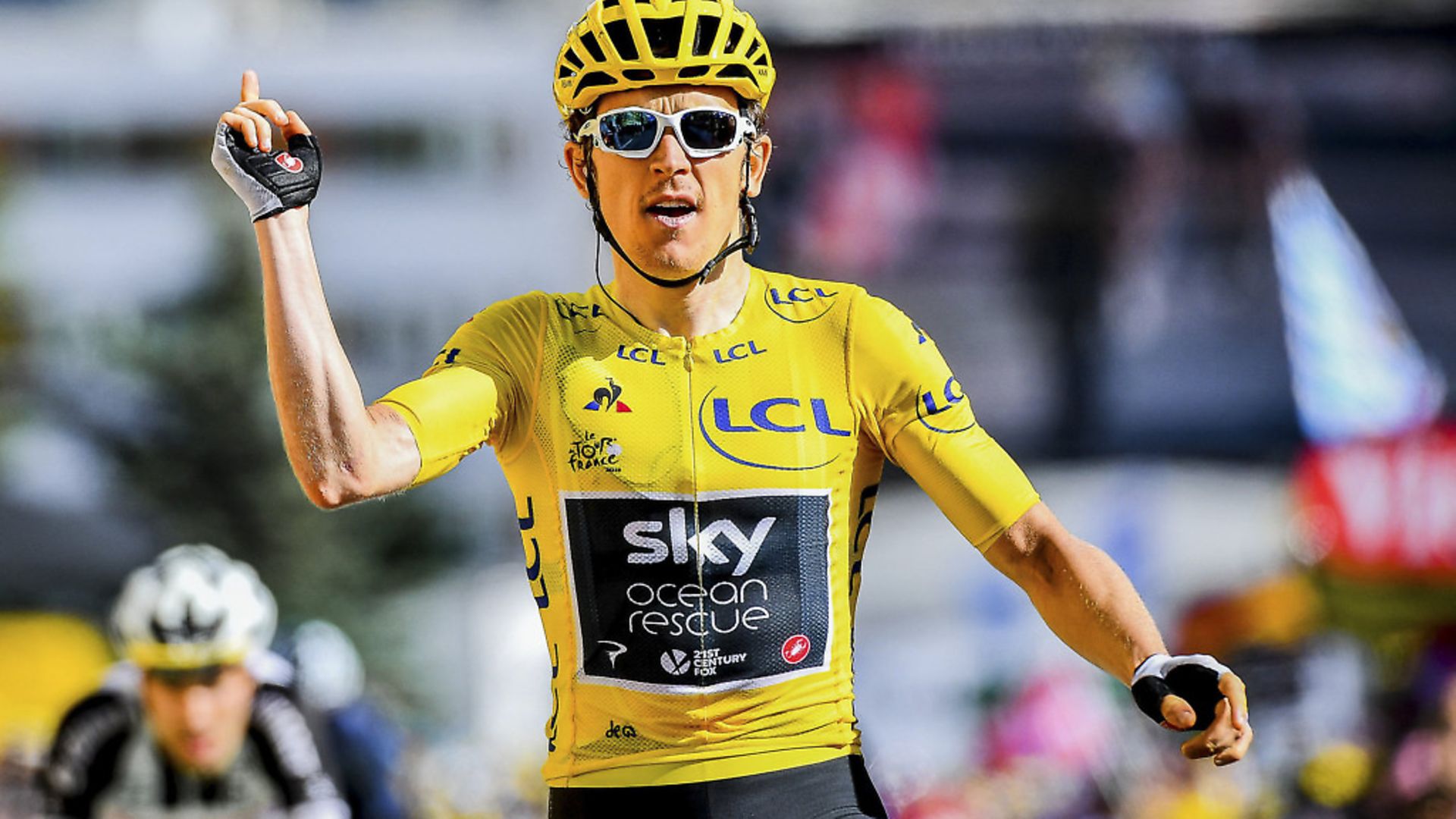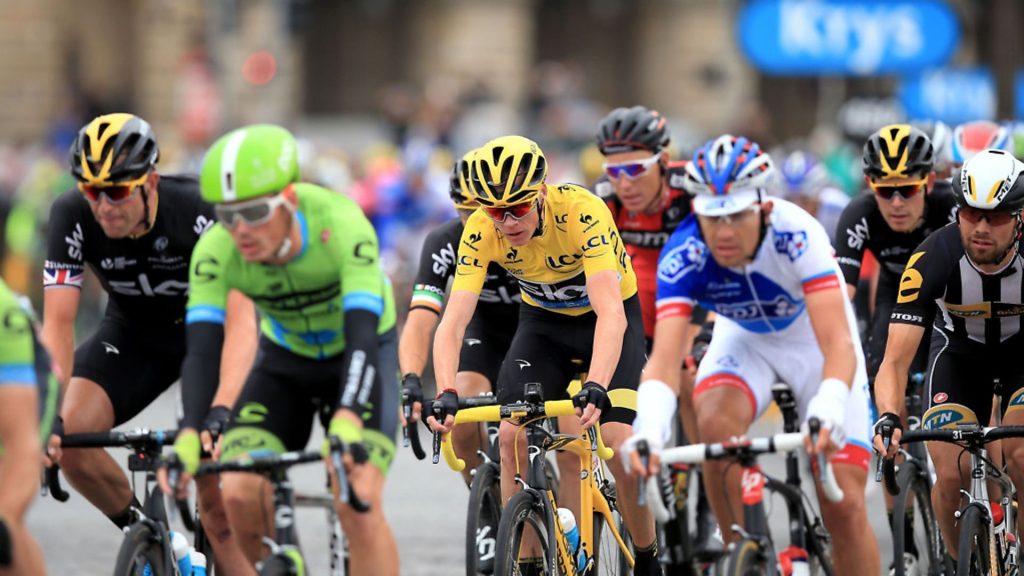
This year’s Tour de France marks a significant landmark in the event’s much-storied history. Jack Elton-Walters reports on 100 years of the maillot jaune.

As with so many elements of the Tour de France, the precise origins of the yellow jersey (maillot jaune) worn by the race’s overall leader have been lost to the mists of time.
In the contest’s earliest stagings, the leading rider was singled out by a green armband and exactly when and why it was replaced by a yellow jersey remains the subject of debate.
According to one account, the Belgian rider Philippe Thys was first asked to wear the garment when leading the race in 1913. Organisers wanted him to be in a bright colour, to make him easier to distinguish for onlookers.
Thys initially resisted, realising that jersey would make him a more visible target for his competitors. He eventually relented a few stages later, when his manager pointed out what a good opportunity it would be to advertise his sponsors. A yellow jersey was duly found at the next bike shop the rider reached. The item was a perfect fit, but for the hole in the neck which had to be cut larger to get Thys’ head in.
Alas, the arrival of war the following year and the subsequent death of many competitors left no one to corroborate Thys’ account and Tour historians have found no newspaper references from the time to support the story.
This leaves the more substantiated, official version of events that the jersey did not make an appearance until the 1919 race. The colour was supposedly chosen because it was the same as the paper used by French newspaper L’Auto – now L’Equipe – which had launched the Tour in 1903 and benefited from a huge boost in circulation as a result.
Even this account, however, has its rivals, with another story suggesting that yellow may have been chosen due to its unpopularity among riders, meaning there was little risk of the leader’s jersey appearing similar to a team’s outfit. Yet another account suggests it was an accidental choice, made because Henri Desgrange, the race director, needed 15 jerseys of the same colour and could only find the required number in yellow, since it was an unpopular choice.
Whatever the exact genesis of the garment, it made a big impact in the 1919 Tour. It was first worn by French rider Eugène Christophe, who held it for most of the race (although he ultimately finished third). Like Thys, he was a reluctant recipient, complaining that he was laughed at by spectators along the route, who called him a canary, a nickname that stuck.
The jersey itself also stuck and has since become one of world sport’s greatest and most recognised prizes. For some riders spending just one day in yellow will be the biggest moment in a career that could span two decades.
It is this official account, then, that will be celebrated in this year’s race, the 106th to be staged, and 100 years since the yellow jersey made its recorded debut.
To mark the anniversary, each day will see a slightly different yellow jersey awarded to the leader of the general classification to be worn on the following day’s stage. In all, 20 unique jerseys will be presented and worn throughout the Tour, with designs showing significant climbs, landmarks, buildings and famous riders from the history of the race.
How well the greyscale on yellow background images will show up once the rider’s team logo is slapped across the chest will be interesting to see when the first winner stands atop the podium at the end of Stage 1 on Saturday.
Look to Australian Caleb Ewan or Dylan Groenewegen, from the Netherlands, for a likely victor, but also cross your fingers and hope against hope that Mark Cavendish can turn back the clock and take the win.
During the century of yellow jerseys, eight different British riders have led the Tour de France for at least a day.
The first of these was Tom Simpson who took over the race lead at the end of Stage 12 of the 1962 Tour but relinquished it at the end of the following stage. His story took a tragic turn five years later when he died during a Tour de France stage on the slopes of Mont Ventoux. A post-mortem found that he’d taken a mixture of alcohol and amphetamines, which proved fatal when combined with the summer heat and exertion of the race.
Since then, Chris Boardman, Sean Yates, David Millar, Sir Bradley Wiggins, Chris Froome, Mark Cavendish and Geraint Thomas have all worn yellow; with Wiggins, Froome and Thomas each holding it all the way to the end of the race to claim the overall victory.
This year’s race also marks another significant landmark in the event’s history, as it is 50 years since the sport’s greatest ever rider won his first Tour title. At 24 Eddy Merckx made his debut at the Tour in 1969 and won by a huge 17 minutes and 54 seconds (for context, Thomas won the 2018 Tour by 1:51).
This was the first of his five wins and was also a good year for British cycling as Barry Hoban took back-to-back stage victories during the race. Merckx won the final stage time trial into Paris and as well as taking the yellow jersey he also won the points, mountains, combination and ‘combativity’ classifications. Merckx took the win in both the overall and mountains classifications again in 1970, a feat not repeated until Froome took both yellow and polka dot in 2015.
Merckx is a Flemish-Belgian who grew up in a bilingual suburb of Francophone Brussels. In the year of Merckx’s first Tour de France win, the race even visited his hometown of Woluwe-Saint-Pierre/Sint-Pieters-Woluwe early in the race.
It’s because of Merckx and the 50th anniversary of his first overall victory that the Tour de France is hopping the northern border of its homeland to begin the race in the administrative capital of the European Union. The opening two stages of this year’s race will start and finish in Brussels, with the first doing a 192km loop into Wallonia and back to Brussels before the second sees riders cover a rolling 27km during the team time trial.
As was the case for Merckx, a strong showing in the team time trial could see one of the race’s overall contenders, such as defending champion Geraint Thomas, pull on the yellow jersey very early into the race. If that were to happen, you can expect the rider to consider ‘lending’ the jersey to a lower-ranked rider, probably someone from a second-tier team who’s not seen as an overall threat, for a few days to take the pressure off their own team before retaking charge of the race in the high mountains or the mid-race individual time trial.
This year the fight for overall victory should be more open than it has been since Team Sky/Ineos started its domination almost a decade ago. Four-time winner Froome was heading to the race looking to match Merckx’s five wins but a crash last month saw him left in a hospital bed, with several broken bones and question marks over whether he will ever be able to compete at his best again.
Second to Froome at last year’s Giro d’Italia before coming second to Thomas at last year’s Tour, the next favourite would have been Dutch rider Tom Dumoulin but he was injured in a crash in May and has not recovered sufficiently to race the Tour. Defending champion Thomas is in with a shout but could see his chances scuppered from within his own team as Colombian wonderkid Egan Bernal is getting better and better.
French hopes lie with Romain Bardet and Thibaut Pinot. Either rider could win the race overall, but they can’t afford a single bad day across the three weeks and they’ll have to find themselves on the right end of some serious luck if they’re to stand on the top step of the podium in Paris on July 28 wearing the centenary yellow.









